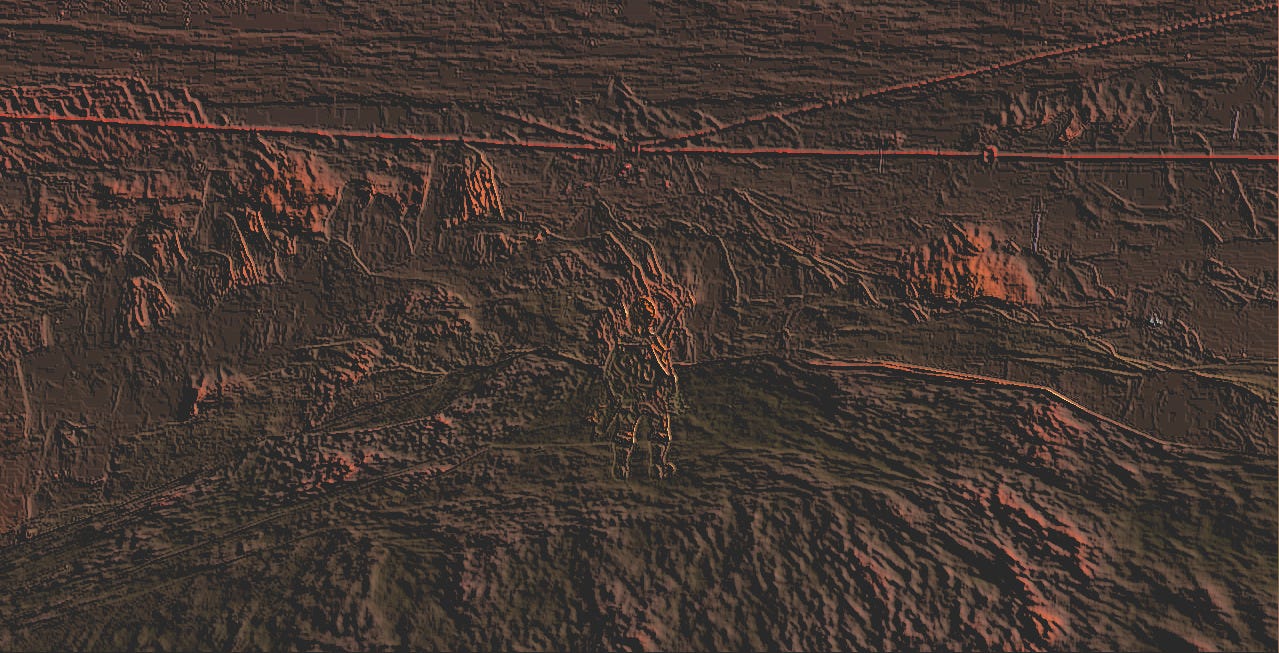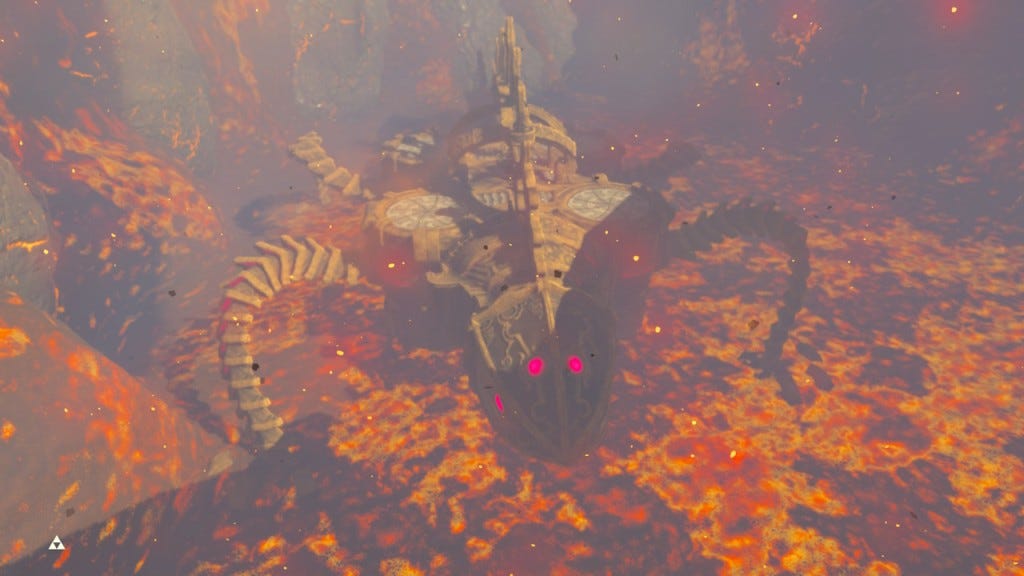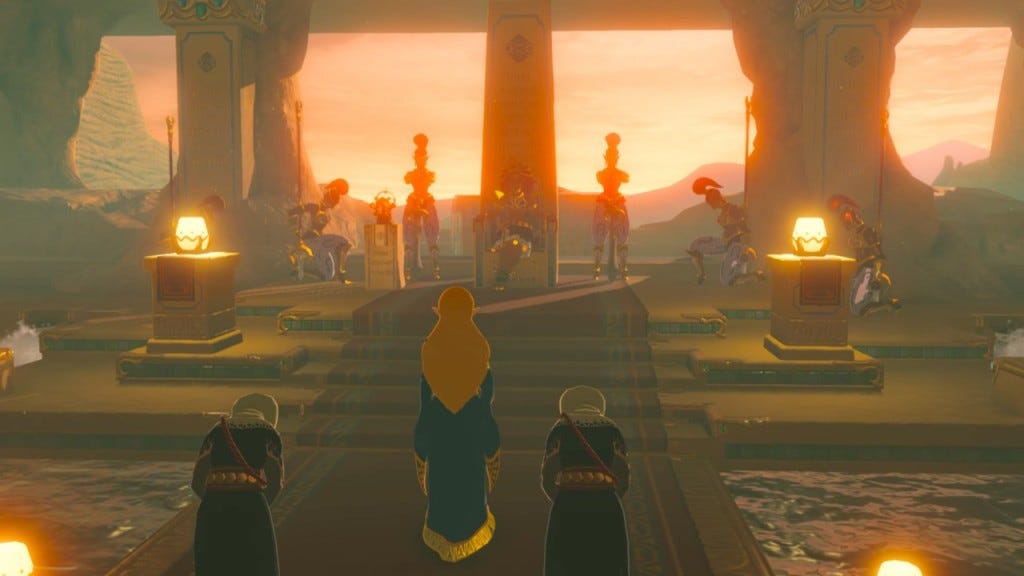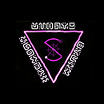It's finally time to zoom out and examine Link's quest from a bird's eye view; this will be the first post in the World of Ruin category that isn't sculpted around my actual gameplay. I haven't touched the game since my last post, except to jump onto the loading screen real quick to confirm where I saved my game: The Spring of Wisdom.
A reader following along may notice I've been waffling a bit, hesitating to take the step that lays here before me. As I've admitted all along the way, the journey has so far consisted of an approach combining intuitive "drifting" with an intention to align this playthrough to the best of my ability with certain principles drawn from, among other things: Jungian psychology, The Hero's Journey, the calendar or Wheel of the Year, tarot, and alchemy. That's a heady mix. As we've seen, I started discovering so much, from the moment I set out on this quest and actually started doing the work, that it quickly became overwhelming. However, I found all the clues along the way that I'd need to forge this plan.
Spiral Out / Keep Going
One thing that's helped me get my thoughts together for this gameplan is that I've gone out of my way to reconcile with the fact that this isn't going to be the perfect playthrough. Firstly, it's already imperfect, and it's probably not going to be executed as perfectly as I'm envisioning it, either. Secondly, I am probably going to continue having all sorts of new insights as the journey continues that will serve to "re-write my map," or change the wider gameplan in what might be significant ways for a future playthrough. Fortunately, since I've been drawing from alchemical symbolism and ended my previous post with a declaration that this game is a genuine "alchemical vessel," it turns out that all of this repetition is a feature, not a bug. As I wrote in Right On Time, we can become more perfectly ourselves, but never perfectly ourselves, and the same holds true in alchemy.
One reason I know this is true is because of just what a rich resource this article has been. I first found it while writing Set Flame to the Night, the post in which I first cite it. I note that content selection on that website has since been disabled (meaning I can’t copy and paste text from its web pages). Hm. That's okay, because I'd chiseled this entire paragraph out already to say that anyone reading this post, or even this entire blog, should probably study both the article above, and another one on the site called The Sacred Game [EDIT 10/11/2024: Actually, now The Sacred Game appears to have been deleted from the site. Hm.] If you're that interested, you'll do the work of finding it yourself, I imagine; I think you'll be well rewarded. As for myself, I haven't finished reading The Sacred Game yet, but I'm pretty excited about it and I think it will inform the direction this site takes beyond Breath of the Wild (that's right, I am so only getting started here. Just wait).
At any rate, if you read the article, which is about an engraving of Ezekiel's Vision, you'll note the following:
The wheels in the engraving itself are rendered into a geometrically-impossible "figure eight" or "infinity loop" reminiscent of a Möbius strip. For one, this is another symbol of the endless or cyclic nature of the work; however, we're not running around in mere circles here. I think what's really being depicted here is some kind of 4-dimensional object at least. I'm not a mathematician, but I read Kaku's Hyperspace when it came out and I think this way of viewing Ezekiel's wheel makes sense.
Further adding to the hyperdimensional weirdness of this object (or process?) is the description of the alchemical process represented, and how it suggests an impossible kind of motion that cannot be adequately depicted in stone (and I don't think can truly be comprehended by the human mind). It's described as “two revolutions of a wheel” while acknowledging that's an oversimplification for the sake of illustration. What I envision (or at least, endeavor to envision, and fail) is a wheel somehow turning both ways at once. Maybe the above-described "hyperwheel" could, in fact, theoretically do such a thing? Any math fans reading this? Drop a comment if you care to.
With the above preliminary statements set in place, it's time to whip out the map and plot our course using the above principles as guide...lines? Come on, I'm tryin' here. Nobody's perfect.
Plotting Global Revolution
Warning! SPOILERS for The Legend of Zelda: Breath of the Wild from here on out!
Here is the map of Hyrule, with the rough locations of the Divine Beasts marked:
The first comment I want to make is that the Divine Beasts really look like a Christian reference to the eyes of a huge portion of the game's target demographic; some of them will see Bible Beasts and some people will think of certain Tarot Keys, but that covers a large swathe. However, it could just as well be a nod to China's Four Mythological Symbols. Technically, it's neither because this is a game. Both the Biblical and Chinese "Divine Beasts" are rooted in astrological constellations, which we've already seen carved all over shrines and towers in Hyrule. It's pretty clear what the basic idea is that we're working with here.
Question: Can we call this "corporate cultural appropriation?" That's a fruitful ethical question to explore, and I’d like to get around to it at some point, perhaps in a dedicated post.
Follow-up question: Even if it is "corporate cultural appropriation," does that matter? Does that render use of this "vessel" for Initiatory purposes unethical? Why or why not?
Really. Think about it.
I'll offer another set of correspondences that will help deepen the examination of these questions: The Four Elements, since each Divine Beast is also an elemental creature. Once again, we have a system that closely resembles real-world examples from various cultures, but is not a direct "ripoff" of any of them. This provides an interesting "twist" in our course because those of us used to thinking of the Four Elements magic(k)ally can ease into this, but since the elements are different, we'll be forced to think differently as well. The best part is that by doing it here in this video game, we can reap the benefits of the fabled cultural "encounter with the Other" and own our interpretation of it without risking misrepresenting an indigenous culture. In this day and age, that shit is just what the doctor ordered.
Next, I'm going to do a rundown of each of the Divine Beasts, beginning with the order that the game seems scripted for us to take.
Note: The Divine Beast section headers below also serve as links to the corresponding Wiki entry at Fandom.
Divine Beast Vah Rutah
Animal: Elephant
Element: Water
Champion: Princess Mipha
Champion's Ability: Mipha's Grace
Race: Zora
As I illustrated in Cutting To The Chase, the game drops us a bunch of clues to work our way down into the Lanayru Wetlands, and from there, scatters several Zora NPCs around who call out to Link to send him to Inogo Bridge to meet Prince Sidon, who then sends him on a mini-quest to reach Zora's Domain. When he gets there, he learns of Divine Beast Vah Rutah, who is currently possessed by Calamity Ganon and raining water down on Zora's Domain. Now, it's okay for them; they're fish-people. However, Vah Ruta sits in the middle of East Reservoir Lake, and if it overflows, the dam holding it in place will burst and Central Hyrule will be inundated with water. For the main quest, Free The Divine Beasts, Link must venture into Vah Rutah (which, in addition to being a giant mechanical elephant with an energy weapon mounted on its trunk, is also a mobile temple of sorts) and defeat Waterblight Ganon to restore control of the beast to Princess Mipha, its Champion.
Princess Mipha was in love with Link, let's not beat around the bush. Per Zora tradition, she crafted a Zora chestplate for the man she wanted to marry, which was Link. She had the gift of healing powers. When Calamity Ganon awakened, Mipha perished, along with all of the other Champions. Her Champion's Ability, Mipha's Grace, will resurrect Link when he falls in combat...with not only full hearts, but several extra yellow hearts as well. This ability thus grows in its relative value with every natural heart Link adds to his meter. Some say it's overpowered and removes the challenge from the game, while others say it's completely useless because they never need it. We always have the option of shutting these off, so no one should be complaining about it.
The element of Water corresponds to the element of Water in any other real-world elemental system that uses Water. Not only do the Zora swim in it, but we will see that the ones we meet feel all of their emotions very deeply, vibrantly, passionately, and with conviction.
Divine Beast Vah Rudania
Animal: Salamander
Element: Fire
Champion: Daruk
Champion's Ability: Daruk's Protection
Race: Gorons
The next-nearest Divine Beast is Vah Rudania, which is also the next one in order if we circle counter-clockwise around the map. Occupying the Eldin region, crawling about Death Mountain, Hyrule's looming volcano, Divine Beast Vah Rudania is a fiery Salamander who is currently raining wave after wave of burning plasma onto Goron City. The Gorons are a large, hardy people who mine the mountains and don't normally much mind the heat, but can't get much done under Rudania's onslaught. The Gorons' Champion is Daruk and his Champion's Ability is Daruk's Protection, which creates a shield (in the form of a d20, heh) around Link that will absorb all damage once. It has three charges Link can use up, then it will need to recharge for a while (all of the Champion's abilities do, by the way). It can be really useful in training to block properly with a shield by giving Link some protection for when he misses the timing; I love it currently for giving more room to defeat Lynels. However, because of the clumsy-ass way it activates in tandem with the raising of Link's shield, you always have to go turn it off if you want to rely strictly on your shield instead of burning through your charges. Sometimes it's a way bigger pain than its OP blocking ability is worth.
The element in this case is interesting (at least from my Western point of view) because yeah, it's really hot, so it is fire, but its manifestation in this game is more solid than fire and is more a combination of fire and earth. This is important because, with one of the other elements being a substitution, there is no bona fide solid element in the game. I will explore some of my metaphysical theories about this later on.
Divine Beast Vah Medoh
Animal: Eagle
Element: Air
Champion: Revali
Champion's Ability: Revali's Gale
Race: Rito
Stabbing Westward, we come to Rito Village, occupying a tall, natural spire in the middle of Lake Totori (which I am sure is a My Neighbor Totoro reference). The Rito people are bird people (they take various forms, though their leader looks owly) associated with the element of air. They are the only race that can fly, and outside of Rito Village, there's only one Rito I've even run into: The inestimable Kass. Vah Medoh is tormenting the village with, of course, constant windstorms. Link will need the help of Teba to reach it and defeat Windblight Ganon.
The Champion who pilots Vah Medoh is Revali. This guy rubs me the wrong way and I'm not the only one who doesn't like him (one of my favorite YouTubers, Croton, hilariously calls him "Ravioli" and I am stealing that). He's arrogant as fuck. Now, to some extent, this is honestly cultural. In keeping with the character of the element of Air in Western systems of occultism, the Rito are cool, analytical, detached. They fly! They're literally over most people's heads, it's true. But in Ravioli's case, he lays it on pretty thick and makes it clear that he flat-out sees no reason Link should be required if he's on the scene. Such cocksureness.
Divine Beast Vah Naboris
Animal: Camel
Element: Thunder
Champion: Urbosa
Champion's Ability: Urbosa's Fury
Race: Gerudo
Last but certainly...most certainly...not least is Divine Beast Vah Naboris, the Camel of Gerudo Desert. Its element is called "thunder" but is more properly the lightning that causes thunder; Vah Naboris is wandering the Gerudo Desert kicking up a dust storm that threatens to consume Gerudo Town. Gerudo Town is currently being governed by Riju, a child-queen; however, Link's task here will hardly be child's play.
The Gerudo, clearly inspired by the real-life tales of the Amazons, are a desert race of warrior women—yes, women, because Gerudo males are basically one in a million—and their society is closed to voe (in Gerudo speak, "voe" is "man" and "vai" is "woman"), a policy that is strictly enforced even after Riju learns Link's gender. As such, whenever Link has business in town, he goes in drag. And he looks damn sexy.
The Gerudo's powerful reputation is checkered, because Ganondorf—the Gerudo King after whom the Phantom Ganon Set is modeled, which should tell you something right off the bat—was the man who became Calamity Ganon. These gals put up with a stigma for it when they venture out into the world, as they must if they wish to find a mate.
The Champion who pilots Vah Naboris is my absolute favorite Divine Champion, hands-down: My girl, Lady Urbosa. Bow to her now, for even Zelda did so when Lady Urbosa lived...and it was because Lady Urbosa was the only one who ever really had Princess Zelda's back. She was a force to be reckoned with, and her Champion's Ability, Urbosa's Fury, is as well. It creates a spherical burst of lightning that covers an impressive area. In Normal Mode, the first time I tried it out, I completely wiped out an entire fort full of Bokoblins down in Lurelin. The whole camp.
As I've mentioned elsewhere, the reason Vah Naboris is last in the standard order (aside from its geographical position vis-à-vis the widdershins flow of events) is because Thunderblight Ganon is the most difficult to defeat.
Solve, Pt. II
So, I feel pulled in two different directions for this ceremonial playthrough: I want to explore the standard play order because there are some things I am really excited to write about in the post I'll write about Vah Ruta. However, I am also salivating to take in the challenge of doing the reverse order, but I don't want to do this twice. I have a special save file set up for this, so it all needs to happen inside that single instance of the game by design.
Well, I've got myself covered.
In The Royal Road, I brought up the alchemical stage of Separation, and that turns out to be the key to this puzzle. There's another thing I learned only after a couple of playthroughs, and it's that one can separate the appeasing of a Divine Beast with its actual cleansing. For example, when Link first encounters Vah Ruta, it's raining cats and dogs throughout the region; Link and Sidon team up to "assault" Vah Ruta from the waters of East Reservoir Lake; while Ruta chucks ice blocks at them, Link and Sidon are swimming around so Link can shoot certain weak spots on Ruta's back with arrows. This is how he gains entry to each divine beast, with such an "archer phase." At that point, the rains stop, and Zora's Domain is no longer threatened.
If Link's concern vis-à-vis Heroism is rooted in anything outside his own ego (and, by definition, all true Heroism is), then it would probably be better for him to go to Goron City and do the same for those folks before he needs to do anything about the Blight Ganons. In fact, the game is literally designed so that Link can ignore them entirely until he goes for Ganon in Hyrule Castle; but he'll have to face each of them there, instead.
By separating these tasks into different phases, one can clear most obstacles out of the way and then take one's time to finish the rest. Best of all, it allows us to run through the game one way, then the other, all in one playthrough.
Ready to take this thing for a spin?









